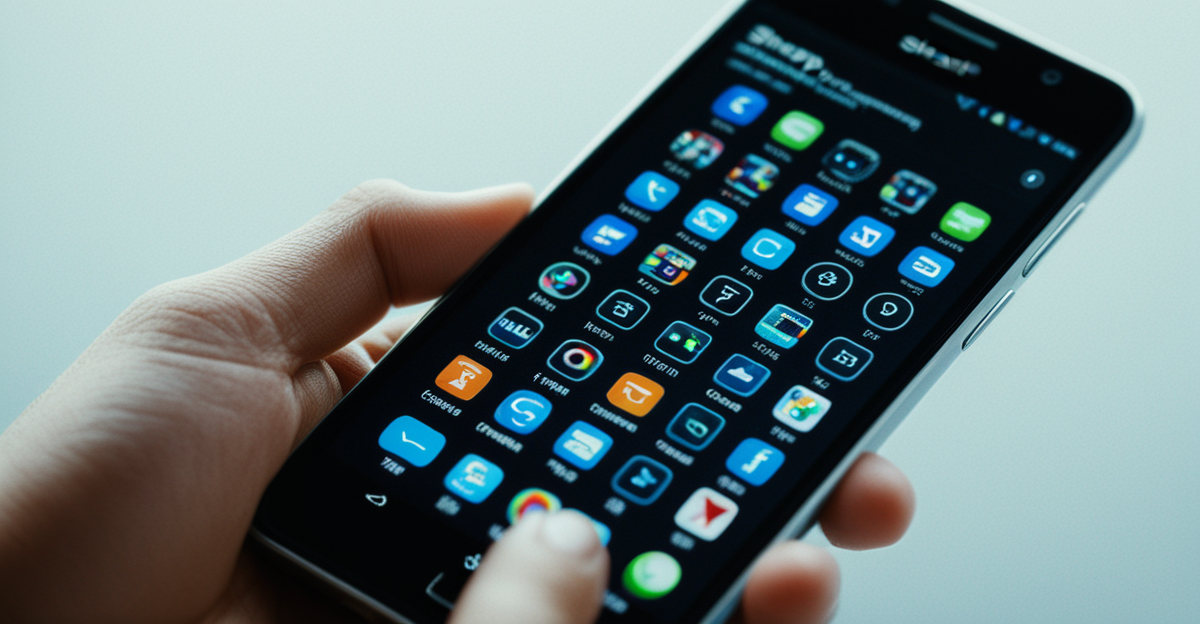The Role of Smartphones in Productivity Enhancement
In today’s fast-paced world, smartphones have emerged as powerful tools for productivity. Unlike traditional computing devices, smartphones offer unparalleled convenience and accessibility, enabling users to perform a range of tasks on-the-go. Their compact nature and advanced computing capabilities allow individuals to stay productive regardless of their location.
Smartphones intertwining with daily work routines offer unique advantages by seamlessly integrating everyday tasks with mobile technology. Thanks to the vast array of apps available, smartphones facilitate efficient time management, communication, and collaboration across various platforms. As a result, they play a crucial role in transforming modern work environments, providing users with the means to manage tasks, set reminders, and coordinate effortlessly with colleagues.
In parallel : How Can Smartphones Transform the Education Landscape?
Moreover, smartphones are inherently designed with utilities that surpass mere communication purposes, evolving into essential components of modern computing. These devices help users to achieve a balance between professional duties and personal responsibilities, reflected in enhanced productivity levels. Consequently, smartphones have become indispensable tools, driving significant productivity across diverse fields and demographics.
Key Features of Smartphones that Boost Productivity
Smartphones are equipped with a range of features designed to enhance productivity. These features have transformed these devices into essential productivity tools, allowing users to perform tasks more efficiently and stay organized.
Additional reading : Easily trade your iphone 16 plus using vendi's app now
Application Functionality
One of the standout features of smartphones is their robust application functionality. With access to an extensive selection of apps dedicated to task management, note-taking, and scheduling, users can tailor their devices to meet specific productivity goals. These apps offer various functionalities such as reminders, deadlines, and collaborative interfaces, crucial for managing daily workloads.
Multitasking Capabilities
Smartphones also excel in multitasking capabilities. Many now offer split-screen features, allowing users to run multiple applications simultaneously. This capability facilitates seamless transitions between tasks, like checking emails while updating a calendar, maximizing the efficiency of work processes.
Connectivity Features
Additionally, the connectivity features of smartphones play a pivotal role in productivity enhancement. Features such as Bluetooth, Wi-Fi, and mobile data enable effortless integration with other devices and cloud services. This connectivity ensures that information is always at users’ fingertips, fostering a responsive and collaborative working environment. These key characteristics underscore how smartphones have evolved into indispensable tools for enhancing productivity.
Popular Productivity Apps for Smartphones
In the realm of enhancing productivity, smartphones shine brightly through their array of specialised apps. These applications are pivotal in elevating efficiency levels and optimizing task management. Let’s delve into some of the top productivity apps that have gained popularity among users.
Todoist stands out as a go-to choice for task management. Its intuitive interface allows users to seamlessly manage tasks and deadlines. With features like task prioritization, setting reminders, and project labels, Todoist caters to the meticulous organization needs of its users.
Moving on, Trello is highly regarded for its project management capabilities. Particularly useful for collaborative efforts, Trello enables users to create boards, lists, and cards that streamline task allocation and tracking. Its visual layout and collaborative tools have made it a favourite in both professional and personal settings.
Another heavyweight in the productivity apps arena is Slack. Known for transforming communication within teams, Slack offers a platform where conversations, file sharing, and integrations with other productivity tools flourish. Its real-time messaging functionality ensures that team members remain connected and informed, regardless of their physical location.
The comparison of mobile apps versus desktop applications often highlights an increased flexibility and accessibility inherent in smartphone apps. Unlike their desktop counterparts, smartphone apps are designed with on-the-go use in mind, facilitating work beyond traditional office settings.
In various sectors, these popular productivity apps have demonstrated remarkable success in fostering efficient workflows. They underscore the critical role smartphones play in modern productivity enhancement, paving the way for streamlined processes and improved collaboration.
Integrating Smartphones with Other Tools
In today’s dynamic work environment, smartphones serve as pivotal connectors with other productivity tools, enhancing workflows and ensuring seamless integration across platforms.
Connecting with Laptops and Smart Devices
Smartphones efficiently connect with laptops and smart devices, creating an integrated ecosystem that boosts productivity. Through features such as Bluetooth and Wi-Fi, smartphones sync smoothly with other devices, allowing users to access and transfer data effortlessly. This connectivity ensures that whether at a desk or on the move, users can maintain continuity in their work processes.
Apps for Seamless Syncing
A variety of apps are designed to support seamless syncing across platforms. These apps allow users to manage files, collaborate with teams, and schedule tasks across different devices without any hitch. For instance, apps like Microsoft OneNote and Evernote enable users to take notes on their smartphones and access them from a laptop or tablet. This cross-device functionality is essential for tasks that require comprehensive planning and coordination.
Examples of Integrated Tech Enhancing Efficiency
Practical examples highlight how integrated technology enhances workplace efficiency. Professionals often use smartphones in tandem with digital assistants like Amazon’s Alexa or Google Assistant to organize meetings, control presentations, or set up reminders. In the realm of smart homes, smartphones can control devices like thermostats and lighting, optimizing energy management even while attending to work duties.
In essence, the integration of smartphones with other tools creates a streamlined workflow, optimizing productivity and allowing users to exploit the full potential of modern tech.
Demographic-Specific Uses of Smartphones in Productivity
The versatility of smartphones in boosting productivity is evident across various demographic groups, each with unique requirements. These devices cater to diverse needs, from students managing academic workloads to entrepreneurs driving their businesses forward.
Students
For students, smartphones have become indispensable tools for academic productivity. Apps like Google Classroom and Khan Academy provide platforms for interactive learning and coursework management. These applications allow students to engage with educational material at their own pace, making learning more accessible and personalized. Additionally, productivity tools like Quizlet enable students to create flashcards and quizzes, aiding in effective study habits and exam preparation.
Remote Workers
Remote workers benefit immensely from smartphone features that support flexible work arrangements. Communication and collaboration apps like Zoom and Microsoft Teams keep professionals linked with their teams, regardless of location. Calendar and scheduling apps further assist remote workers by organizing meetings and setting reminders, ensuring tasks are completed efficiently without the constraints of traditional office hours.
Entrepreneurs
For entrepreneurs, smartphones are crucial in managing burgeoning business needs. Tools such as Square and PayPal Here make financial transactions seamless, while apps like Asana help with project management and team collaboration. Entrepreneurs can track expenses, delegate tasks, and monitor business performance directly from their smartphones, allowing for agile decision-making in dynamic market environments.
These specific uses illustrate the broad impact smartphones have on enhancing productivity within different demographic sectors, each leveraging unique features to fulfill their distinct needs.
User Testimonials and Case Studies
User experiences highlight the transformative impact smartphones have had on productivity, offering personal insights into everyday benefits. Anecdotal evidence from various users suggests that smartphones facilitate smoother task management and improve time efficiency, empowering professionals to juggle numerous tasks effectively.
Successful case studies demonstrate how smartphones revolutionize industry practices. For instance, in healthcare, mobile apps allow doctors to access patient records instantly, making informed decisions rapidly. In education, teachers use smartphones to communicate with students and parents, and to access and share teaching materials on-the-go. These success stories underscore the smartphone’s versatility across sectors.
From corporate environments to solo entrepreneurship, adopting smartphone technology has yielded significant productivity enhancements. Entrepreneurs testify that smartphones enable them to conduct business operations from anywhere, optimising workflow and decision-making. By harnessing smartphone capabilities, diverse industries learn invaluable lessons on efficiency and adaptability, enriching professional processes.
Constraints and Challenges of Smartphone Use
Smartphones, while being pivotal for enhancing productivity, also bring certain limitations. Recognizing common pitfalls associated with smartphone dependence is crucial for maintaining an efficient workflow and ensuring these devices are used to their full potential without becoming detriments.
Over-reliance and Distractions
One of the primary challenges is the over-reliance on smartphones, which can lead to distractions that may hinder productivity. Social media notifications, endless app browsing, and frequent alerts can interrupt workflow, reducing efficiency and focus. It’s essential to identify these distractions and turn off non-essential notifications or use apps designed to block interruptions during critical work periods.
Hindered Productivity
Smartphones can potentially hinder productivity when not appropriately managed. Constant connectivity might result in blurred lines between personal and professional life, leading to burnout. To counteract this, users should set strict boundaries on work-related communications and dedicate specific times for downtime, promoting a healthier balance.
Mitigating Challenges
To mitigate these challenges, adopting focused strategies like scheduling specific times for checking emails and messages can enhance concentration. Moreover, leveraging smartphone features like Do Not Disturb and productivity-focused apps can create an environment that fosters improved focus and efficiency. By understanding these challenges and employing strategies to overcome them, users can harness the full potential of smartphones in their daily tasks without succumbing to the pitfalls of overuse.
The Future of Smartphones in Productivity
As we look ahead, smartphones continue to evolve, defining the landscape of productivity through emerging technology and innovative applications. This dynamic shift not only enhances how we work but also sets the stage for a more efficient future.
Innovations on the Horizon
Upcoming smartphone innovations promise to revolutionize productivity tools. From augmented reality (AR) applications that offer immersive work experiences to foldable screens that expand multitasking capabilities, these innovations represent a shift towards more versatile work environments. The integration of 5G technology further accentuates this, offering faster data rates and reduced latency, which are crucial for real-time collaboration.
Predictions on the Work Environment
As technology advances, smartphones are expected to significantly reshape future work environments. Remote work, bolstered by smartphones, will likely become the norm, with virtual offices replacing traditional settings. Artificial intelligence (AI) and machine learning will harness data in ways that personalize and automate routine tasks, leading to smarter work processes and optimized decision-making.
The Role of AI and Machine Learning
AI and machine learning integration within productivity apps plays a pivotal role in enhancing smartphone functionality. These technologies bring predictive text features, advanced chatbots for customer service, and personalized task recommendations based on user habits. Voice assistants, powered by AI, are becoming more intuitive, understanding context and providing solutions efficiently, which streamlines user interactions.
In conclusion, the advancement and integration of emerging technologies in smartphones herald an era where productivity is not only enhanced but fundamentally transformed. As smartphones continue to leverage cutting-edge innovations, they position themselves as central components in the evolving digital work landscape, shaping how tasks are approached and executed in the future.










